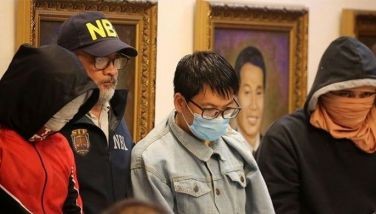Weak tremors, quiet degassing observed at Kanlaon after eruption

MANILA, Philippines — The Philippine Institute of Volcanology and Seismology (PHIVOLCS) said on Tuesday that Mount Kanlaon exhibited quiet degassing and weak low frequency volcanic earthquakes a day after erupting.
Ma. Antonia Bornas, chief of PHIVOLCS' volcano monitoring and eruption prediction division, reported that the agency recorded 81 low-frequency volcanic earthquakes and two volcanic tectonic earthquakes since Monday's “explosive eruption.”
Kanlaon, a volcano on Negros island, ejected a five-kilometer plume of ash, gas, and rocks into the sky on Monday evening.
“After the eruption last night, we saw intense degassing from Kanlaon’s crater that waned only this morning,” Bornas said.
Bornas outlined three possible scenarios for the future activity of Kanlaon
Alert Level 2, indicating increasing unrest, may be maintained if:
- Monitoring parameters are sustained
- Phreatic or steam-driven and short-lived explosive eruptions may subsequently occur
- Small-magnitude hazards may be produced, posing threats to areas within the four-kilometer Permanent Danger Zone (PDZ)
- Unrest is likely caused by hydrothermal processes driven by magmatic degassing deep within the volcanic edifice
PHIVOLCS may raise Alert Level 3, signifying high level of unrest, if:
- Magmatic eruption may become likely if seismic, ground deformation and volcanic gas parameters worsen
- Unrest is likely being driven by stresses within volcanic edifice produced by rising magma
- Eruptive activity could generate volcanic hazards that will endanger areas within the lava flow and pyroclastic density currents (PDCs) hazard zones. (PDCs are dangerous and fast-moving avalanches of hot gas and volcanic debris)
The agency may downgrade the alert level over Kanlaon to 1 if:
- Monitoring parameters decline
- Unrest is driven by very shallow hydrothermal processes
“Whatever happens, it is likely that there will be phreatic or similar explosive events because that is the nature of Kanlaon. More often than not, there is something that follows,” Bornas said partly in Filipino.
PHIVOLCS advised the public to avoid the PDZ to minimize risks from sudden explosions, rockfall, and landslides as there could be “further explosive eruptions or even hazardous magmatic eruption.”
It also said that pilots should avoid flying close to the volcano’s summit as ash from any sudden eruption can be hazardous to aircraft.
Gov’t action
President Ferdinand Marcos Jr. said on Tuesday that PHIVOLCS, the National Disaster Risk Reduction and Management Council (NDRRMC), and the Department of Social Welfare and Development (DSWD) are on top of the situation.
He added that the government has provided assistance to affected residents. Nearly 800 people fled their homes following the eruption.
Marcos also called on residents, especially those near Kanlaon, to remain vigilant and follow guidelines set by local authorities.
Kanlaon is one of the 24 active volcanoes in the archipelago.
- Latest
- Trending
































